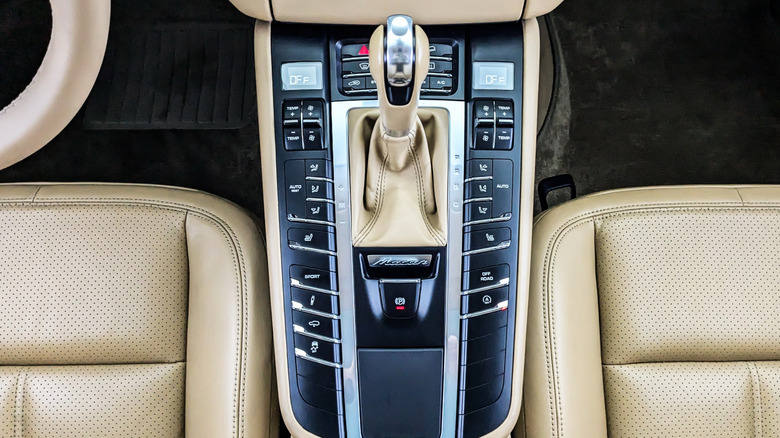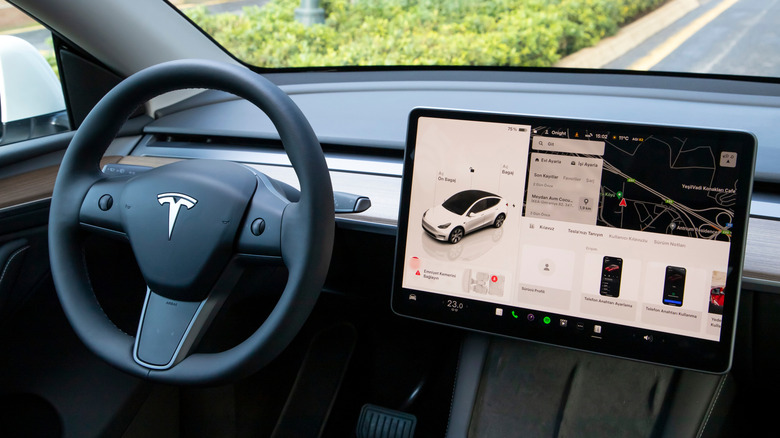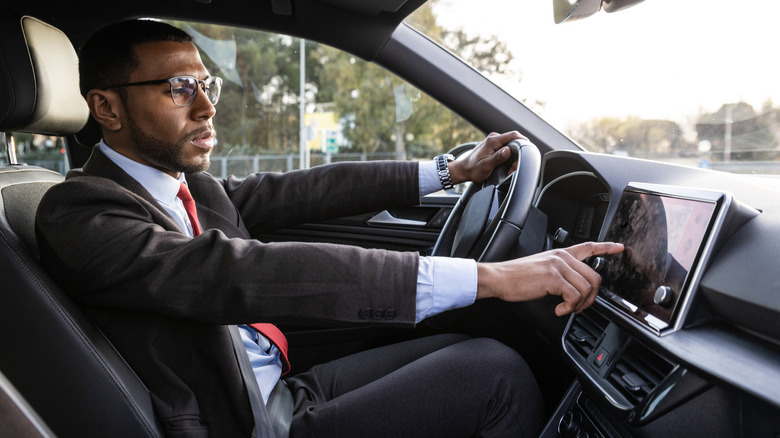Poverty Buttons: What Are Those Blank Buttons In Your Car For?
Have you ever been at the wheel of a car, looked over at the center console, and noticed a button that's blank, with no decal on it to indicate a function? If so — that's a poverty button. Essentially, it's a button that cannot be depressed, or even if it can, it serves no function. So what's the point, and why do we have them?
Automakers use poverty buttons as a way to blank off openings in a piece of trim, usually found on the center console, on the steering wheel, or infotainment system. To keep production costs low, they manufacture just one panel, with cutouts to accommodate every possible button. A lot of those buttons might relate to optional extras, such as air conditioning controls, and if the buyer hasn't selected those options, a blank will be inserted in the cutout. This is what's known as a poverty button, and that's why they exist.
Not all cars have poverty buttons
The use of poverty buttons is mostly reported by owners of everyday, mass-produced cars, such as the Toyota Corolla, Subaru Crosstrek, and Mazda 3. Classic cars don't have them, and some modern cars are actually doing away with them, too, even while physical buttons are returning to Volkswagen dashboards. The drop in poverty buttons is because a lot of new models rely on screens to access heat, air conditioning, and other interior accessories, instead of using physical buttons.
Poverty buttons don't only make sense from a manufacturing point of view, though. They also indirectly tell consumers to spend more. If you don't want your brand-new car to look cheap and filled with button blanks, you'll fork out more and equip the necessary options to remove the blanks. For your best chance of spotting a car with a sea of poverty buttons, find an entry-level model lacking in options and upgrades that higher trims would have sported as standard.
What's the modern equivalent of poverty buttons?
Now that most new releases rely on touchscreens to access a myriad of interior features, the presence of poverty buttons is decreasing — but there is an alternative that's been rising in popularity in recent years. Automakers have introduced subscription-based options, such as satellite navigation, Sirius XM and heated seat subscriptions, and this could be considered the modern-day alternative to poverty buttons. When selecting an option on the infotainment screen that hasn't been subscribed to, such as trying to access BMW's High-Beam Assistant on a model that doesn't have it installed from the factory, instead of the function simply, well, functioning, a pop-up detailing how to order and install it is displayed instead.
Some automakers have recognized problems with touch controls that make them one of the car features to avoid, so a lot of modern cars – especially performance cars — include physical switches. This results in poverty buttons still being installed, even in luxurious models like the Porsche Cayman, which sports a long row of buttons near the shifter. If no extra features are purchased, the pricey sports car is delivered with a sea of poverty buttons — a stark reminder to the buyer of how many options they've missed out on when buying their supposedly high-end German sports car.


